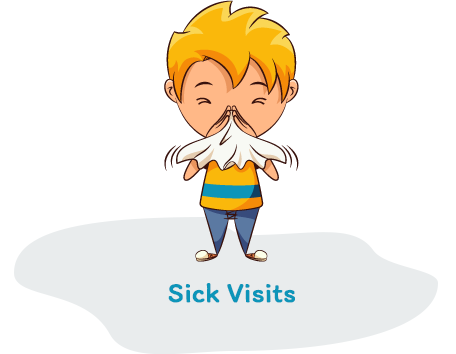Allergic Rhinitis

If your child is sneezing and has a clear nasal discharge and swollen nasal membranes, he may have hay fever. Also called seasonal allergic rhinitis, hay fever is an allergic condition affecting the upper respiratory tract. While the offending allergen may be hay or other pollen-producing plants, this disorder has nothing to do with fever, despite its name.
A youngster with this condition may have dark circles under red, teary eyes, and he may itch in places he cannot easily scratch, like inside the nose and ears, or on the roof of the mouth. As a result, he might wrinkle or rub his nose a lot to try to relieve the discomfort.
For each child there tends to be a hay fever season that depends on the geographical location; usually it starts in the early spring and continues through the fall. Symptoms may appear when the air contains high levels of pollen from ragweed, grass, weeds, and trees, as well as from mold spores.
Hay fever is actually the most common of all allergic conditions, and the tendency to develop it is frequently inherited. Since the allergens that cause hay fever are in the air, they are very difficult to avoid. Nonetheless, as with other types of allergies, the best defense against hay fever is for your child to stay away from the allergens that trigger the attacks. For example, if possible, your child should sleep with the windows closed and the air conditioner on.
When symptoms occur, your doctor may recommend an antihistamine to help control the runny nose, sneezing, and itchiness. As a general rule, begin giving the antihistamine when symptoms first appear; your doctor may recommend that it be taken preventively throughout the hay fever season. Your doctor should personalize and adjust the dosage of the antihistamine and try different types to find the best one for your child. The newer prescription antihistamines on the market do not cause drowsiness.
For more severe cases, special nasal sprays—such as cromolyn or corticosteroid sprays—might be prescribed. Allergy shots can also help create an immunity to the offending allergen.
Hay fever—or seasonal allergic rhinitis— is a different condition than perennial allergic rhinitis. The perennial type occurs throughout the year in response to ever-present allergens such as the house mite, a microscopic insect that is present in dust. Mites may be more plentiful during some seasons and may thus also be a cause of seasonal allergies. The treatment options are the same for both symptom patterns but must be applied year-round for perennial allergies.
Last Updated
9/1/2004
Source
Caring for Your School-Age Child: Ages 5 to 12 (Copyright © 2004 American Academy of Pediatrics)







